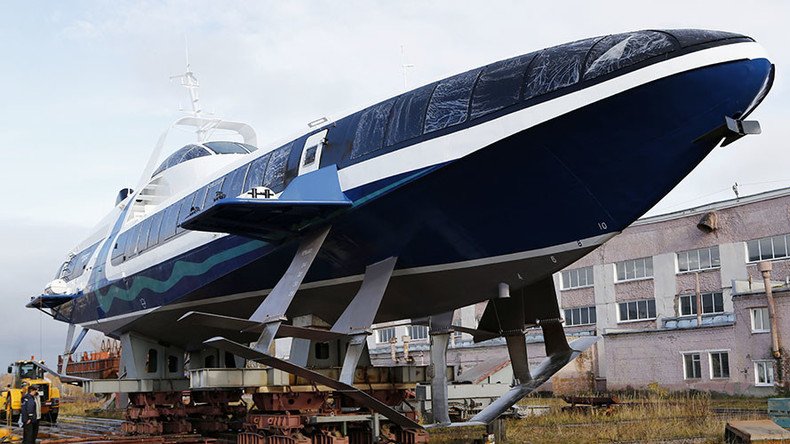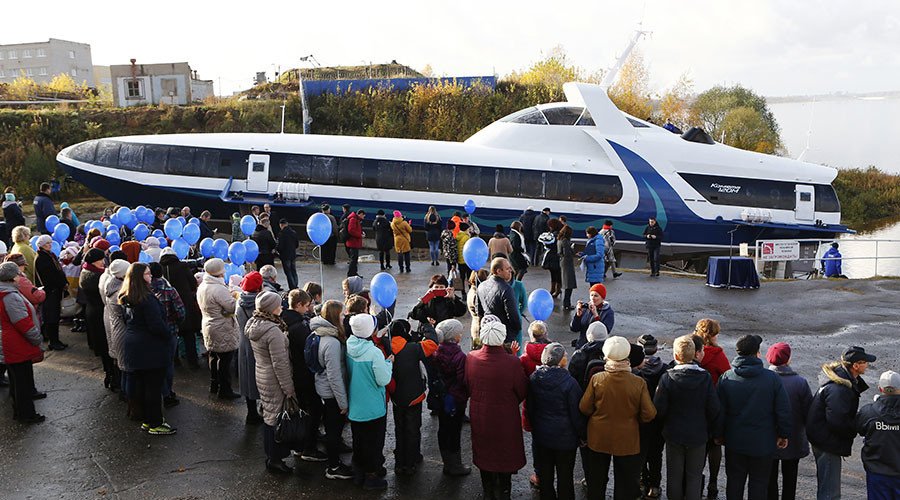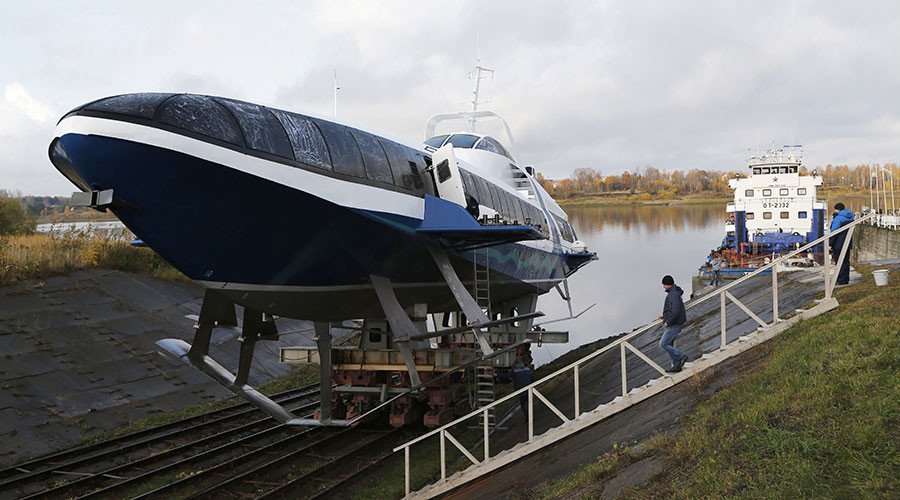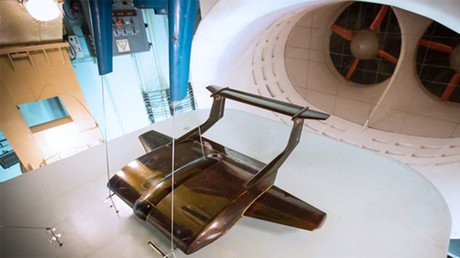Russia floats brand new hydrofoil passenger ship after two-decade pause

A new hydrofoil ship meant to transport up to 120 passengers along sea coast routes has been floated by a Russian producer. The design was popular in the Soviet Union, but modern Russia has not built such vessels for almost two decades.
Hydrofoil works similarly to a regular aerofoil, creating lift for a moving craft. A speeding hydrofoil ship rises above the water with only the foils staying under it, greatly reducing drag and allowing greater speeds to be reached. A French hydrofoil trimaran called “Hydroptère” set the world sailing speed record in 2009 and remains the fastest vessel in the world, with a sail of over 400 square feet.
Among the drawbacks of the design are complexity, poorer fuel efficiency compared with conventional boats and some risks when operating in littered waters or during harsh weather conditions. Still, the boats have found their use as military patrol boats, ferry vessels, leisure craft and even in water sports.

Hydrofoils were popular in the Soviet Union, with dozens of operations throughout the country. But soon after the country’s breakup, the production of new hydrofoils was discontinued, partially due to a worldwide trend disfavoring the technology and also because manufacturers were struggling for survival in the new economy.

The hydrofoil passenger boat of the Kometa 120M project, which was floated for the first time on Friday, aims to reverse the situation. The producer, Vympel, says it plans to build at least five such boats and hopes to get contracts for over 20, potentially exporting to countries like Greece or Croatia.
Kometa 120M, an upgraded Soviet design, is a 73-ton warm sea transport with top speed of 35 knots (65 km/h) and an operational range of 200 nautical miles (370 km). It has a business-class section for 22 passengers, an economy class for 98 and it requires 5 crew members to operate.
The new ship is to undergo sea trials over the coming months in the Black Sea and may enter service next year, according to Vympel. She is expected to operate as a ferry connecting the Crimean ports Sevastopol and Yalta. The producer plans to name her Chaika (“Seagull”), after the call sign of pioneer lady cosmonaut Valentina Tereshkova, who took part in the floating ceremony.
The ability of the hydrofoil to win its share of the transport market remains to be determined. Vympel is a veteran producer of military ships and specialized craft such as towboats or firefighting boats, but Kometa 120M is its first passenger ship design. The production took over four years and had backing from the Russian government, but the model is yet to demonstrate its ability to compete with other craft.













